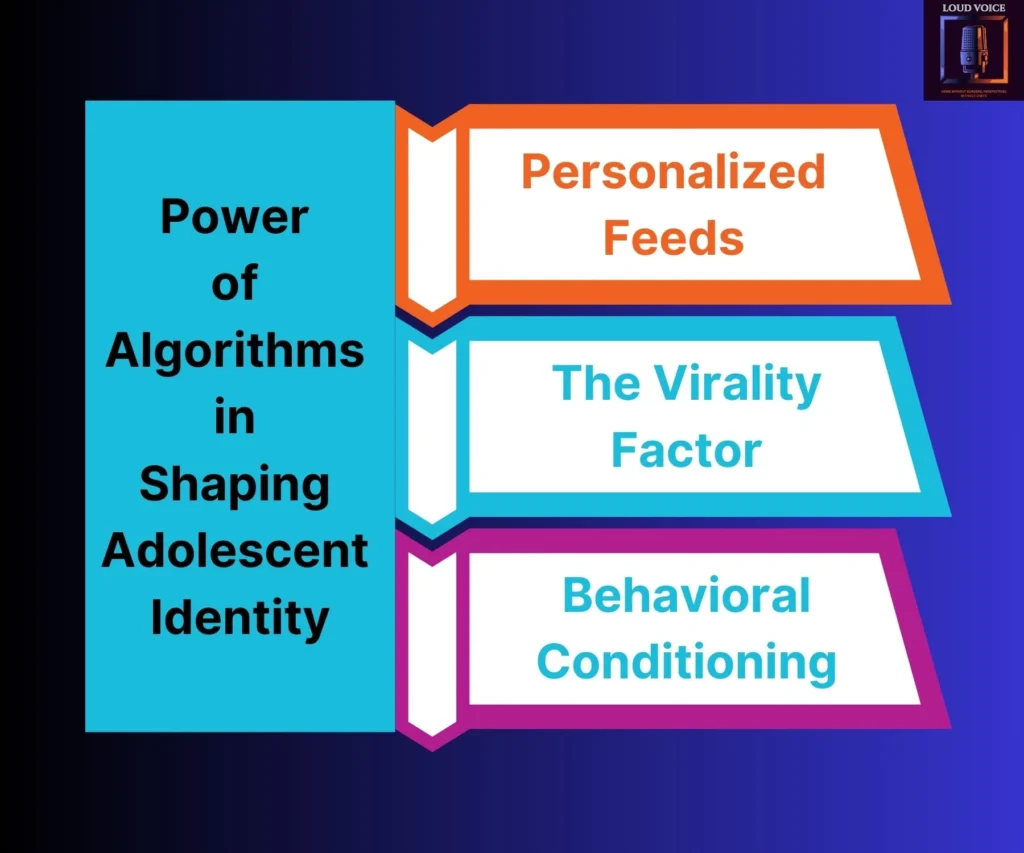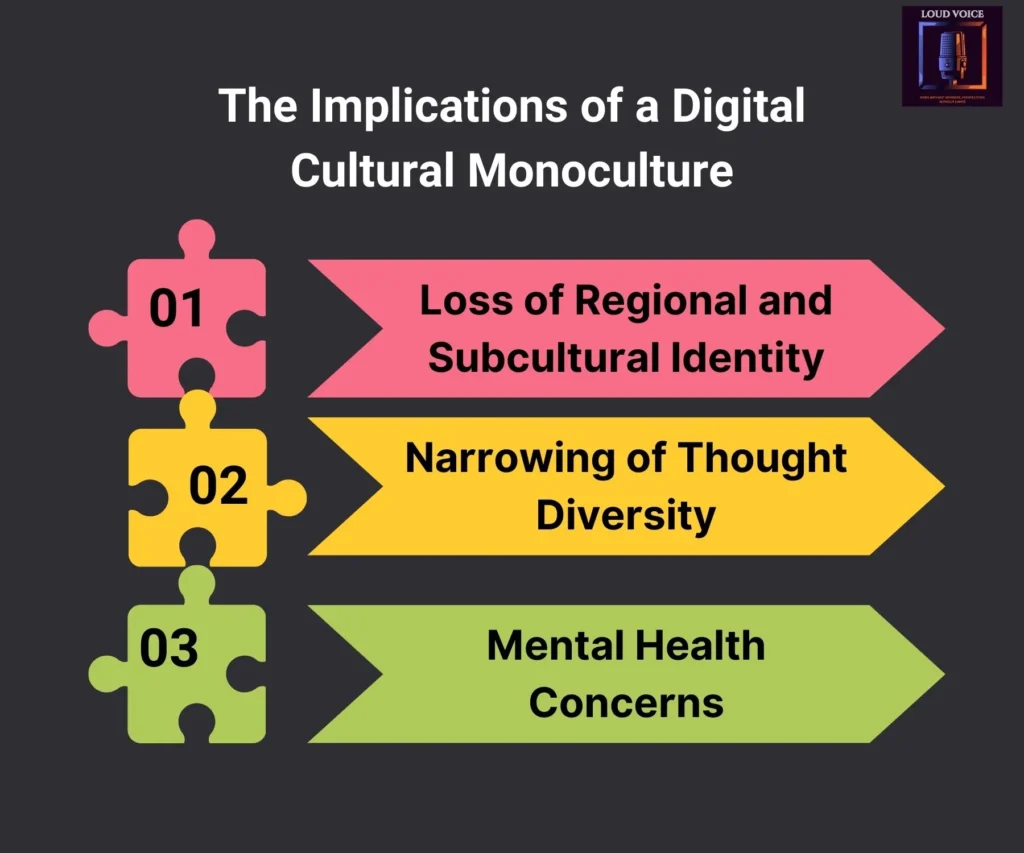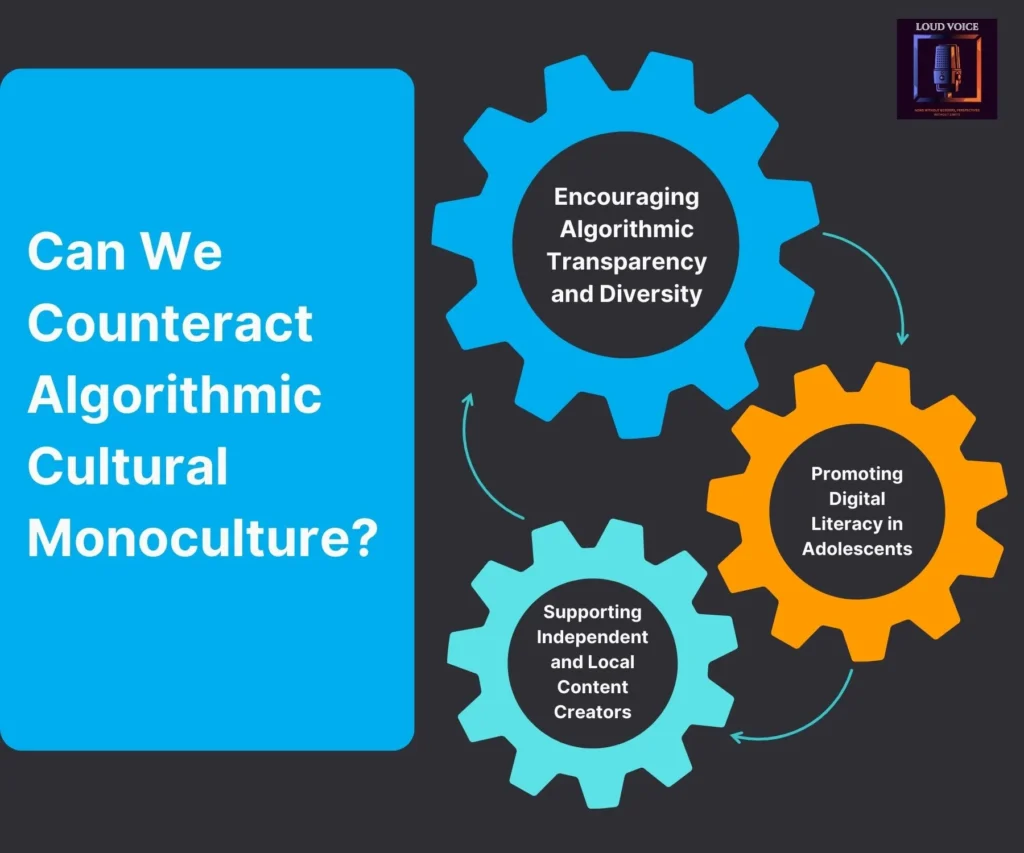Algorithmic Cultural Monoculture: Introduction
In an era dominated by technology, adolescence—the formative years of personal identity and social interaction—has become increasingly intertwined with digital algorithms. Platforms like TikTok, Instagram, and YouTube dictate content consumption, subtly influencing thought patterns, cultural preferences, and behavioral norms. This phenomenon is creating a “cultural monoculture,” where trends, values, and ideologies become homogenized across global youth populations. But how did we get here? And what does this mean for the future of diversity in thought, culture, and creativity?
The Power of Algorithms in Shaping Adolescent Identity
Algorithms determine what young people see online. By analyzing user behavior, these mathematical formulas curate content that aligns with individual preferences, reinforcing existing beliefs while simultaneously shaping new ones. Here’s how:

1. Personalized Feeds: The Echo Chamber Effect
- Social media algorithms prioritize engagement, showing users content they are most likely to interact with.
- This creates echo chambers where adolescents repeatedly encounter similar ideas, limiting exposure to diverse perspectives.
- As a result, their worldviews become shaped by a narrow set of influences rather than a broad spectrum of global cultures.
- This lack of diverse viewpoints can lead to a narrowing of intellectual curiosity, making it harder for young minds to engage critically with opposing perspectives.
- Adolescents may also develop cognitive biases, reinforcing stereotypes and limiting their ability to empathize with those who hold different opinions.
- Over time, these echo chambers can contribute to a digital tribalism where conflicting viewpoints are vilified rather than understood, leading to increased polarization among youth.
2. The Virality Factor: Trend Homogenization
- Algorithms push viral content to mass audiences, making certain trends nearly inescapable.
- From dances on TikTok to meme culture, digital platforms accelerate the spread of trends, often leaving little room for regional or subcultural uniqueness.
- Adolescents worldwide engage in the same challenges, wear similar fashion, and even adopt shared linguistic phrases, fostering cultural uniformity.
- This creates an illusion of universal consensus, where deviation from popular trends feels socially isolating.
- As a result, innovation and originality may suffer, as young creators feel pressured to conform to mainstream content rather than explore niche or unconventional ideas.
- The speed at which trends emerge and disappear creates a cycle of disposable culture, where deep engagement with meaningful content is replaced by fleeting participation in viral moments.
3. Behavioral Conditioning: Dopamine-Driven Engagement
- Platforms use reinforcement mechanisms such as likes, comments, and shares to condition adolescent behaviors.
- The pursuit of validation leads to content replication rather than innovation, discouraging unique expression in favor of algorithm-approved posts.
- Over time, this fosters a feedback loop where content is designed to appease algorithms rather than to represent genuine self-expression.
- This kind of conditioning can lead to compulsive social media use, where adolescents measure their self-worth based on online engagement metrics.
- Furthermore, the emphasis on engagement over depth results in a culture of short-form content, reducing attention spans and limiting exposure to complex, thought-provoking discussions.
- Studies suggest that this addiction to instant gratification rewires adolescent brains, affecting their ability to focus, reflect, and engage in long-term goal setting.
The Implications of a Digital Cultural Monoculture

1. Loss of Regional and Subcultural Identity
- Historically, cultural identity was shaped by local traditions, customs, and storytelling. With digital media dominance, adolescents are more likely to align with global trends rather than heritage.
- Traditional art forms, languages, and music risk fading as algorithm-driven content prioritizes globally consumable media.
- As platforms favor English-language and Western-centric content, non-dominant cultures may struggle to maintain their influence in the digital space.
- The dilution of regional uniqueness may lead to a sense of cultural displacement, where young individuals feel disconnected from their roots.
- This loss of identity can also impact language preservation, as algorithm-driven entertainment increasingly favors globally popular languages over native dialects.
- Additionally, indigenous and lesser-known artistic traditions struggle to compete with viral content, causing many to disappear from digital consciousness altogether.
2. Narrowing of Thought Diversity
- Exposure to diverse perspectives is critical for cognitive development, yet algorithms reinforce pre-existing biases.
- Adolescents engaging with politically or socially homogeneous content may develop a rigid worldview, lacking exposure to alternative viewpoints.
- This raises concerns about critical thinking and open discourse in an increasingly polarized society.
- Echo chambers can contribute to misinformation, as algorithms prioritize engagement over factual accuracy.
- Without exposure to counterarguments, young minds may develop an overconfidence in their beliefs, making productive debate and growth more difficult.
- A reliance on algorithm-fed information reduces the habit of independent research, making adolescents vulnerable to propaganda and digital manipulation.
3. Mental Health Concerns
- The pursuit of online popularity often leads to anxiety, depression, and self-esteem issues among adolescents.
- Cultural conformity can pressure young people to fit into algorithmic expectations, leading to distress when they fail to meet perceived standards.
- Social comparison on curated digital platforms often distorts reality, making adolescents feel inadequate in comparison to idealized portrayals of success.
- Increased screen time and algorithm-driven addiction may further exacerbate mental health issues, reducing face-to-face social interactions and real-world emotional connections.
- The emphasis on virality over authenticity may push adolescents to seek external validation rather than fostering intrinsic self-worth.
- Recent studies indicate that the fear of missing out (FOMO) is amplified by digital monoculture, exacerbating feelings of loneliness and dissatisfaction.
Can We Counteract Algorithmic Cultural Monoculture?

1. Encouraging Algorithmic Transparency and Diversity
- Tech companies must provide greater transparency regarding how their algorithms curate content.
- Implementing features that allow users to diversify their feeds—such as chronological timelines and customizable preferences—can reduce the effects of echo chambers.
- Encouraging open-source algorithmic oversight can help ensure that content curation remains fair and representative of multiple perspectives.
- Government regulations may play a role in enforcing diversity requirements, preventing monopolistic control over digital culture.
- User-driven algorithmic settings should be a standard feature, allowing individuals to adjust their content exposure based on preference rather than machine-generated predictions.
2. Promoting Digital Literacy in Adolescents
- Schools and parents should educate young users about how algorithms shape their experiences.
- Teaching critical thinking skills can help adolescents navigate digital spaces more consciously, ensuring they actively seek diverse perspectives rather than passively consuming algorithm-driven content.
- Encouraging media literacy programs in schools can equip students with the tools to question and analyze the biases present in digital content.
- Adolescents should also be taught about ethical online behavior, including the impact of engagement-driven misinformation.
- Developing a healthy skepticism toward viral trends can empower young people to engage more intentionally with digital content.
3. Supporting Independent and Local Content Creators
- Encouraging adolescents to explore content from independent creators, regional artists, and non-mainstream sources can help maintain cultural diversity.
- Platforms should provide incentives for creators who produce unique, culturally enriching content rather than just viral trends.
- Crowdfunding and community support models can help sustain niche creators who contribute to the diversity of digital content.
- Government and nonprofit initiatives should invest in preserving digital spaces that highlight diverse and underrepresented voices.
Conclusion
The intersection of adolescence and digital algorithms is shaping a new cultural reality—one that risks eroding diversity in favor of global homogeneity. While algorithms provide convenience and entertainment, they also mold young minds in ways that may limit critical thinking, regional identity, and creative expression. However, by fostering digital literacy, promoting content diversity, and advocating for more ethical tech practices, society can help counteract the effects of algorithmic monoculture, ensuring the next generation retains its cultural richness and individuality.


